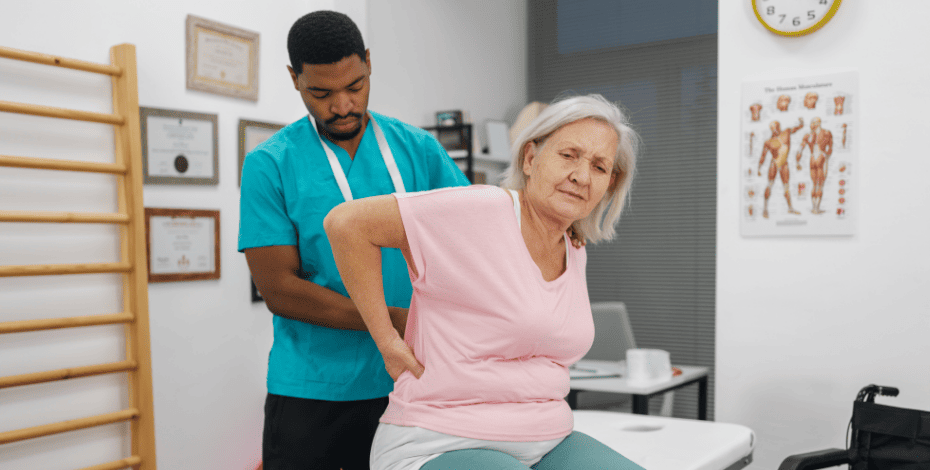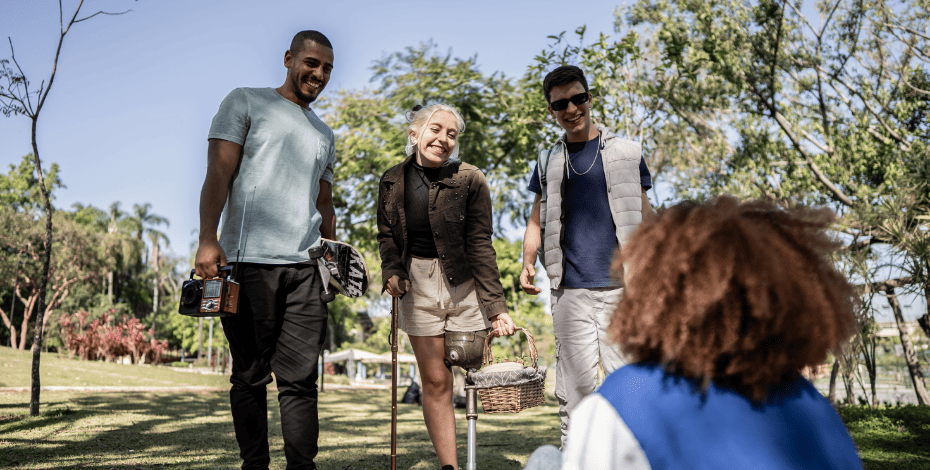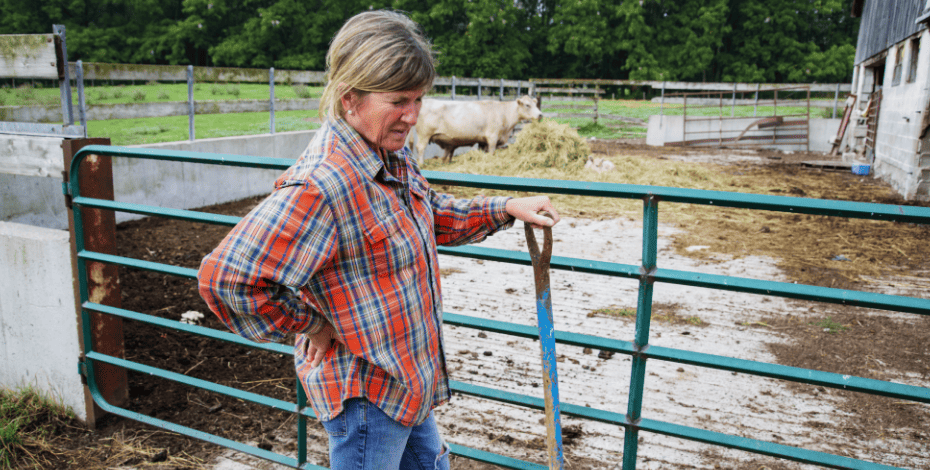
Low back pain: what works and what doesn’t

LOW BACK PAIN While dozens of low back pain treatments have been tested in patients, two recent systematic reviews using meta-analysis to compare data from multiple trials have shown that very few treatments have enough high-quality evidence about their efficacy.
Low back pain (LBP) is a common and debilitating musculoskeletal condition and the leading cause of disability worldwide—around 25 to 30 per cent of people with acute LBP will go on to develop persistent and disabling chronic pain.
While a large number of potential treatments and interventions have been developed, it’s difficult for clinicians and patients to stay updated on what’s available, what works and what doesn’t.
Now, two recent systematic reviews led by Australian and international pain researchers have comprehensively examined the evidence for non-surgical treatments for LBP, identifying the ones that provide some positive effects as well as many that do not.
One study (Cashin et al 2025) is an update of a meta-analysis of placebo-controlled trials of non-surgical and non-interventional treatments for LBP.
The second study is a Cochrane study comparing previous Cochrane reviews of randomised controlled trials testing the effects of non-pharmacological and non-surgical treatments for LBP (Rizzo et al 2025), including both placebo/sham trials and no treatment/usual care trials.
Dr Aidan Cashin, deputy director of the Centre for Pain IMPACT at Neuroscience Research Australia, who was a co-author on both studies, says there are a lot of treatments available for LBP that have been tested and researched and probably far more that are provided routinely in clinical care that haven’t been tested at all.
‘I think it is surprising, but also validating, for people with back pain to see that yes, a lot of these aren’t all that effective and that kind of explains some of their treatment histories—they’ve tried many things and unfortunately haven’t seen long-term results.
‘Maybe these studies will guide us towards the more promising approaches,’ says Aidan.
While each review followed different approaches in selecting eligible studies and data, both studies used the GRADE (Grading of Recommendations Assessment, Development and Evaluation) approach to evaluate the certainty of the evidence.

Professor Steve Kamper is a researcher at the University of Sydney.
‘In previous systematic reviews we looked at the risk of bias at an individual study level.
‘GRADE takes that a step further, giving us a more formalised structure for understanding the whole body of evidence.
‘That’s made the organisation and interpretation of the results a bit easier,’ says the University of Sydney’s Professor Steve Kamper APAM, one of the authors on the placebo-controlled trials review.
The placebo study, published in BMJ Evidence-Based Medicine, is essentially an update of an earlier review (Machado et al 2009).
While the original study examined 76 placebo-controlled trials with data on 34 different interventions, the new analysis draws from a much bigger pool of 301 trials on 56 treatments and treatment combinations and is much more rigorously evaluated, says Steve, who was an author on both the earlier study and the update.
‘The interesting thing was that no-one had done that kind of review—looking at this specific question of placebos—again since we did it nearly 20 years ago,’ Steve says.
The updated review concludes that most of the non-surgical and non-interventional treatments for LBP examined are not effective and only one in ten provides some analgesic effects beyond the placebo.
Among the interventions that did get a tick for a positive effect were the use of non-steroidal anti-inflammatory drugs for pain relief of acute LBP and five treatments for chronic LBP—exercise, spinal manipulative therapy, taping, antidepressants and transient receptor potential vanilloid 1 agonists—but effects were quite small.
‘When we look across the evidence base, there’s not a whole lot for people with acute lower back pain.
‘The one that really stands out is the non-steroidal anti-inflammatory drugs, although the benefits aren’t dramatic on average across the people tested,’ says Aidan.
‘For chronic back pain, there are a few more options that consistently stand out in our studies as well as in guidelines and other reviews.
‘The frontrunner is exercise or some active, movement-based therapy—that seems to be beneficial.
‘Manual therapy has some use and so do some medicines but the benefits are very small and the chance for harms (especially from medicines) are often quite high.
‘Really, the best options are active strategies in addition to education and maybe some psychological therapies if indicated.’
Steve notes that conducting clinical studies on interventions for acute back pain is by nature difficult as many people will get better regardless of what they do, what drugs they take or interventions given.
‘From a research perspective, what that means is that you have quite a limited window in terms of demonstrating the effectiveness of anything because you’ve got this improvement in the background.
‘That makes it difficult to identify really effective things in acute populations.
‘A more important question might be: can we identify people early on who are likely to do poorly and focus on them?’ he says.
While the placebo study looked at non-surgical and non-interventional treatments and included pharmacological treatments, the Cochrane study focused on non-pharmacological and non-surgical approaches.
This review pulled data from 31 Cochrane reviews of 644 trials including more than 97,000 participants with LBP and 27 different treatments.
The results from the Cochrane study are similar to the placebo study.
For acute/subacute LBP, the evidence suggests that staying active can help to reduce pain and improve function.
While spinal manipulation can help a little bit with pain, it probably doesn’t improve function.
For chronic LBP, exercise therapies, acupuncture and psychological therapies can help to reduce pain in the short and medium term, while acupuncture and exercise also help to improve function.
Together, the two trials provide clinicians and researchers with more certainty about which treatments and interventions—at least in isolation—provide positive results for patients with LBP.

Dr Aidan Cashin is the deputy director of the Centre for Pain IMPACT at Neuroscience Research Australia.
‘The trials try to make it simple so that we can isolate the effects of what we think is the intended purpose of the intervention,’ says Aidan.
‘But in clinical practice we often pair modalities together.
‘You may take a medication to allow you to engage with a meaningful activity or a rehabilitation activity, which would then lead to better outcomes.
‘The pairing of interventions isn’t well investigated— particularly if education, exercise and maybe something else is included in a package—and that’s what clinicians are facing daily.
‘Unfortunately, our research architecture hasn’t been sophisticated enough to get reliable answers to that.’
Aidan says that there is probably enough research showing the benefit of exercise for LBP now and it’s time to focus on more nuanced questions, like optimisation of dosing and the effects of combining different therapeutic treatments.
Steve agrees.
‘From a researcher’s perspective, it’s hard to design studies to unpick all of these components, particularly where there are likely to be differences between individuals in how they respond to each part,’ he says.
‘The other things that need to be considered are the potential harms.
‘We have to be more careful about using certain treatments, which presents an interpretation challenge for reviews and trials.
‘Should we expect the same sort of effect size from spinal manipulation or massage as we do from surgery?’
The challenge, then, is to translate the research findings for clinicians to use when working with patients.
‘It’s important for clinicians to have conversations with their patients along the lines of “This is what the evidence says. How do we build something that works for you?”
‘Evidence-based practice as a framework hasn’t made that leap yet—it talks about how we might interpret evidence and how we might decide what’s reliable, but how do we bring that into clinical decision-making?
‘How do we make a sensible interpretation of the evidence that’s out there and have a conversation with the patient in the context of all the other stuff that’s happening in that treatment encounter and make good decisions?’ says Steve.
Aidan and Steve say the two reviews can help clinicians to understand the benefits as well as the risks and harms of different treatments and interventions.
And Steve points out that the messages coming out of them are not too different from what is in current guidelines and clinical practice standards—including the Australian Commission on Safety and Quality in Health Care’s Low Back Pain Clinical Care Standard and the World Health Organization’s WHO guideline for non-surgical management of chronic primary low back pain in adults in primary and community care settings, which strongly encourage education and self-management strategies.
‘I’d like to encourage healthcare professionals to move from saying “Here’s what you are going to do. If you don’t do this, whatever happens to you is your problem” to “We’ve got a number of things that we can try. Here is what it looks like in practice. Here’s the likelihood that you will get this or that benefit. How can we work together? What support do you need to go along any of these lines?”
‘The support they might need for a manual therapy is probably not very much, while the support they might need for an exercise or a lifestyle program might be quite substantial,’ Steve says.
Aidan notes that ultimately the choice of treatment/intervention comes down to the practitioner’s expertise and capabilities as well as the patient’s preferences and competencies.
In the meantime, researchers now have a clearer picture of what research has been done in the LBP space and, just as importantly, where the gaps are—which treatments need better or larger clinical studies to definitively show efficacy.
Future research includes looking at subgroups and why some people respond better to some interventions and treatments than other groups.
Aidan says that research into long-term effects and consequences of treatments is also of interest, in addition to identifying better long-term treatments for LBP and associated disability.
‘We’ve been trying to integrate some of the discovery-based research on drivers/maintainers of pain to develop new treatment packages that may be beneficial.
‘One of these new approaches, graded sensorimotor retraining, seems to be beneficial both in providing meaningful reductions in pain and in long-term benefits for disability.
‘I’m engaged at the moment in preparing for an implementation trial in Australia to figure out whether it will work in usual clinical care,’ he says.
Quick links:
Course of interest:
© Copyright 2025 by Australian Physiotherapy Association. All rights reserved.




